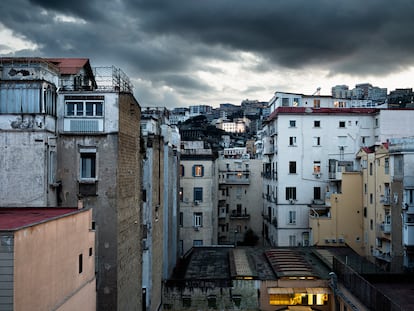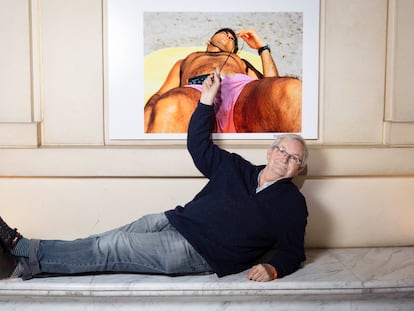The opium that awakens the people
Edo Costantini and Delfina Braun, a couple of Argentine artists based in upstate New York, have just successfully ended an exhibition in Manhattan in which they explored the contradictions contained within a plant that heals and at the same time generates great pain in humanity
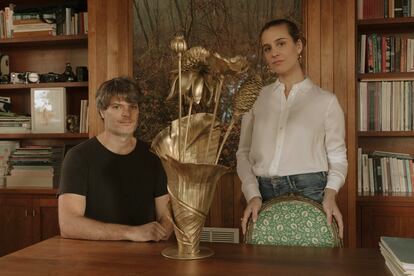
Edo Costantini jokes that the person who helped him marry the artist Delfina Braun was a Golden Bear. It was 2007 and they were both at the Berlinale, presenting the film he had produced and in which she had collaborated. “We went to Berlin because we had a film in competition that won the top prize, so it was impossible for us not to get married,” he says, making it sound like a fairy tale. Delfina corrects him affectionately, bringing him back to reality with her gaze. “Well, we fell in love right away. But we were in Brazil filming in the favelas, which was quite an intense experience. That was our first trip together,” she explains.
The film in question was Elite Squad by José Padilha, and it was a great international success for Brazilian cinema, but also a great personal achievement for Edo, who had been seeking to emancipate himself from the shadow of his father, Eduardo Costantini, owner of one of the largest fortunes in Argentina and one of the best collections of contemporary art in Latin America, as well as the founder of the Museum of Latin American Art of Buenos Aires (MALBA), of which Edo was director for years.
Seventeen years later, Edo and Delfina remain united by a highly productive marriage, both artistically and personally. They have just successfully closed an exhibition entitled Opium Whispers at the Praxis gallery in Manhattan, led by Braun, but in which Costantini and the architect Delfina Muniz Barreto have also collaborated. It has been an experience that reaffirmed them in the conflictive relationship between privilege and meritocracy.
“I have worked very hard since I was very young, nobody has given me anything for free. But of course I am very grateful and proud of my father, who, among other things, left a museum to Argentina. Because there are so many businessmen who accumulate wealth and do not give anything back,” says Costantini. Throughout his artistic career, which includes projects such as the film platform and production company Mubi, the artistic and publishing initiative Kolapse, and experimental music albums such as Silencio, he follows the guiding principle of contributing to a better world. “Wake up and heal,” he sums it up.
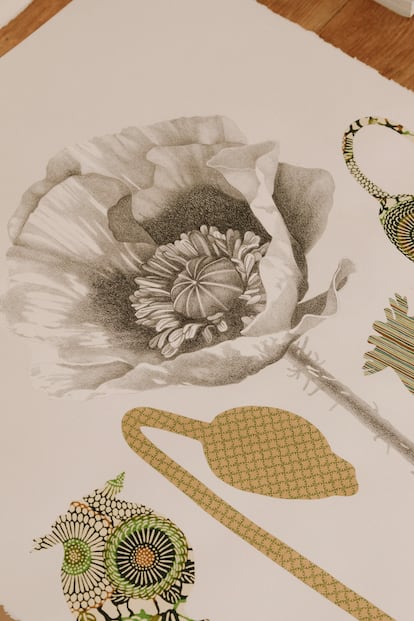
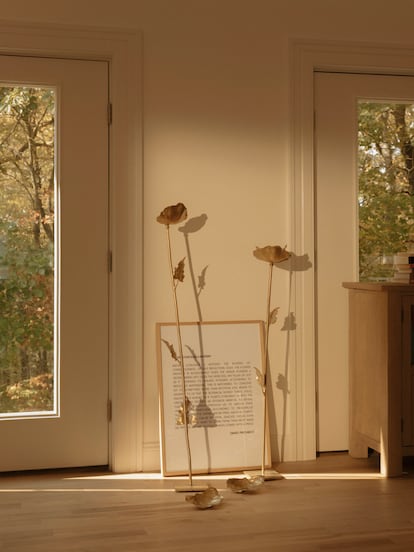
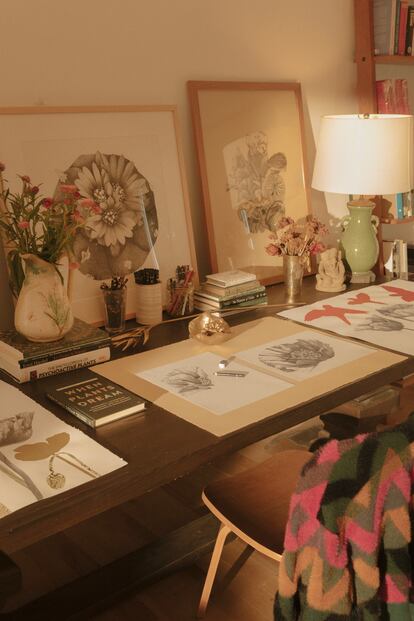
This principle is also the principle of their existence. They live happily with their four sons in Bedford, in upstate New York. They have bought a house that is not ostentatious, located in a deciduous forest that explodes with colors on the autumn Sunday when they received EL PAÍS for the interview. In this location they have created a world in their own image and likeness, a balcony to nature, which is their ultimate muse, and which they try to decipher on each walk, each time an animal visits their shelter far from the madding crowd.
“That nature from which we have dissociated ourselves so greatly as a civilization is constantly calling us with its majesty and its strength,” explains Braun, the more sociable of the two. Costantini, who is more withdrawn and solitary, more jealous of his space, adds that in this house they have become aware “of that mystery that is seen in every birth, in every death.” Then he adds: “I have photographed plants and mushrooms and many of the things that Delfi also draws, but I think it is like something deeper that unites us, and then each one represents it in a different way.” For her, the references come from Francis Bacon or Cecily Brown. For him, from Gego or Lygia Clark.
In this workshop that they share, their differences and convergences come together in an increasingly harmonized way. On the one hand, there is the creative corpus of Delfina, who is back in Praxis after her first monographic exhibition in 2022, and who exudes meticulousness in her charcoal drawings of opium flowers, looking almost like entries in a plant atlas. “As a child, I lived on the outskirts of Buenos Aires and nature was my natural habitat. I am the only child of my parents’ marriage, so I spent a lot of time by myself, and I loved collecting plants. I had my diaries... That’s where my obsession with classifying and knowing what each thing is and what it’s for comes from,” she recalls. When she studied psychology, she focused on mental health and did internships in addiction studies, while reading Jung and his approaches to the collective unconscious. “Physical and mental healing was always my greatest interest. Why the disorder, where does it come from. And that’s when I started to get interested in opium, a plant that heals, anesthetizes and at the same time has generated great pain in humanity for as long as there are records.”
This fixation was one of the points of connection with her husband, since 10 years ago they both found the book Opium: Journal of Drug Rehabilitation, by Jean Cocteau, in a bookstore on the Lower East Side of Manhattan. Costantini, who is more focused on audiovisuals — above all music, film and photography — had come to know the multifaceted French artist through his film adaptation of Beauty and the Beast (1946) and immediately became obsessed with his work, and when he plays one of his scores on the piano, he has the aforementioned book to his right. This synergy was the genesis for the New York exhibition, in which Delfina’s strongest field (painting) was complemented by a central bronze sculpture that is like a forest of opium poppies at different moments of their flowering process and, most strikingly, an amplification of the sound of these plants, imperceptible to humans.
“With a device you can listen to frequencies emitted by plants, mushrooms… It is a fascinating project in that sense, because the drawing transmits one thing, the sculpture another, and the sound gives another dimension to everything,” explains Costantini about this exhibition that will be part of Jean Cocteau’s first monothematic exhibition in South America in 2025, at the Museum of Contemporary Art of Niterói, in Rio de Janeiro.
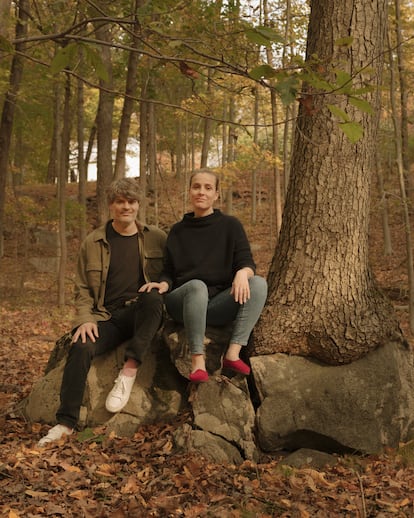
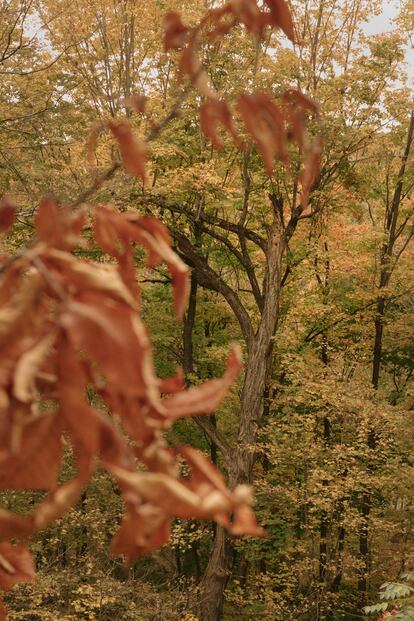
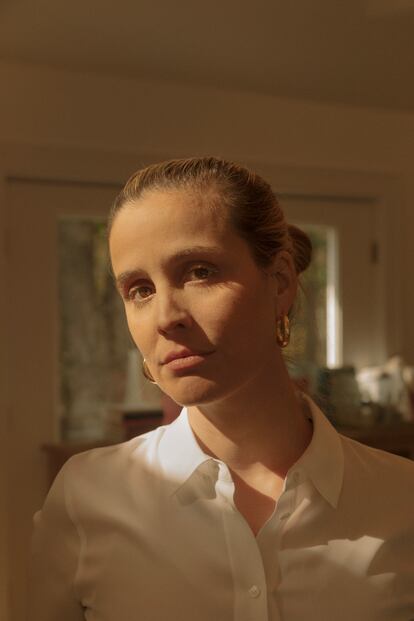
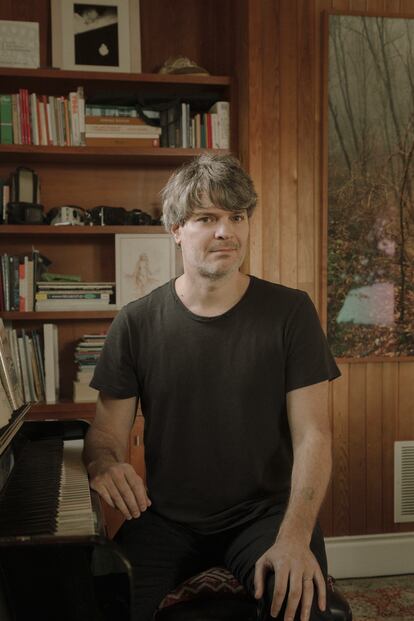
And although his conversation is inevitably peppered with remnants of a past full of important names — from back when he managed to do the first Chantal Akerman retrospective at the MALBA in Buenos Aires, or when he heard for the first time about the science of “collapsology” by Yves Cochet, which inspired one of his projects, while organizing a charity concert with Patti Smith — Edo confesses that his life of contemplation seeks to focus solely and exclusively on the present, which distances them from the artist’s curse. “We are drawn to works where the tragic appears, but I don’t think we are tragic. We are two very positive people, with a lot of hope,” he explains. “Death is the ultimate mystery,” says Delfina. “But we are not going to avoid it, nor aging either,” adds Edo.
However, even in this exile from the uninspiring stresses of life, the political reality of Argentina with the controversial presidency of Javier Milei sneaks into the conversation. Delfina considers that his values and policies can be “dangerous.” Edo, focusing on the purely artistic, adds: “We have many friends who are filmmakers, writers, painters, and this is very bad for the entire arts industry. But again we are optimistic that everything will be put back together. It will not stay like this.”
Sign up for our weekly newsletter to get more English-language news coverage from EL PAÍS USA Edition
Tu suscripción se está usando en otro dispositivo
¿Quieres añadir otro usuario a tu suscripción?
Si continúas leyendo en este dispositivo, no se podrá leer en el otro.
FlechaTu suscripción se está usando en otro dispositivo y solo puedes acceder a EL PAÍS desde un dispositivo a la vez.
Si quieres compartir tu cuenta, cambia tu suscripción a la modalidad Premium, así podrás añadir otro usuario. Cada uno accederá con su propia cuenta de email, lo que os permitirá personalizar vuestra experiencia en EL PAÍS.
¿Tienes una suscripción de empresa? Accede aquí para contratar más cuentas.
En el caso de no saber quién está usando tu cuenta, te recomendamos cambiar tu contraseña aquí.
Si decides continuar compartiendo tu cuenta, este mensaje se mostrará en tu dispositivo y en el de la otra persona que está usando tu cuenta de forma indefinida, afectando a tu experiencia de lectura. Puedes consultar aquí los términos y condiciones de la suscripción digital.
More information
Archived In
Últimas noticias
Raúl Rocha, from jet-setting with Miss Universe to arms trafficking and fuel theft
80,000 barrels of Mexican oil sent to Cuba: Havana drawn into the US–Mexico clash
Human rights activists, opposition members, and a minor: Maduro’s other political prisoners
Israel sparks a civil war within the MAGA movement
Most viewed
- Reinhard Genzel, Nobel laureate in physics: ‘One-minute videos will never give you the truth’
- Pablo Escobar’s hippos: A serious environmental problem, 40 years on
- Charles Dubouloz, mountaineering star, retires at 36 with a farewell tour inspired by Walter Bonatti
- Why we lost the habit of sleeping in two segments and how that changed our sense of time
- The fall of a prolific science journal exposes the billion-dollar profits of scientific publishing
